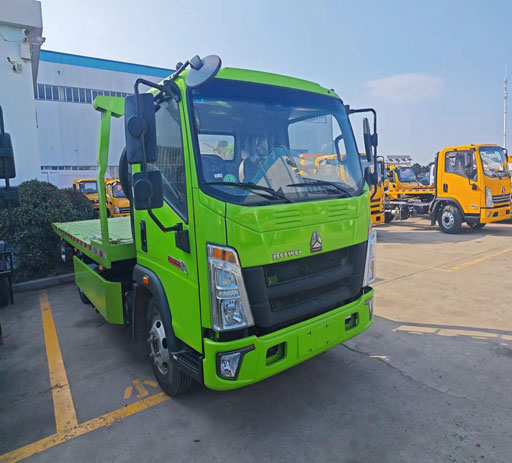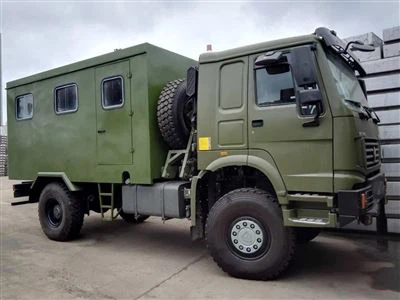Everything You Need to Know About the International 4700 Truck

Introduction
The International 4700 truck stands out in the commercial vehicle market for its versatility, reliability, and robust performance. A member of the International truck family, the 4700 series has proven to be a favored choice for businesses ranging from delivery services to construction. This article delves into the specifications, features, uses, buying tips, and maintenance guidelines related to the International 4700 truck, ensuring that you have a comprehensive understanding of this exceptional vehicle.
Overview of the International 4700 Truck
History and Background
The International 4700 was introduced by Navistar International and quickly became recognized for its durability in various applications. Built upon a strong chassis, it has served various industries effectively, making it a reputable player in the medium-duty truck category.
General Specifications
| Feature | Details |
|---|---|
| Engine Options | Depending on the model year, it offers a range of diesel engines, including the DT466 and the DT570. |
| Transmission | Available options include a 5-speed manual and a 6-speed automatic transmission. |
| Payload Capacity | Up to 26,000 lbs, based on configuration. |
| Cab Configurations | Available in standard and crew cab models. |
| Wheelbase Options | Varies from 154 inches to 204 inches, depending on the model. |

Key Features of the International 4700 Truck
Engine Performance
The International 4700 boasts impressive engine options that ensure maximum efficiency and power. The DT466 engines, for instance, provide strong torque and horsepower, making them suitable for hauling heavy loads.
Comfort and Interior Design
The truck’s cab is designed with driver comfort in mind, offering ergonomic seating, easy access to controls, and ample storage options. Many models also feature air conditioning and sound insulation, enhancing the overall driving experience.
Safety Features
Safety is a priority in the International 4700 design. It comes equipped with essential safety systems such as anti-lock brakes, airbags, and optional electronic stability control, ensuring a safer ride for both drivers and cargo.
Typical Uses and Applications

Delivery and Logistics
The spacious cargo area and high payload capacity make the International 4700 an excellent choice for delivery services. Its access to urban areas and highways enables efficient transport of goods.
Construction
Many construction companies utilize the 4700 due to its durability and ability to handle rough terrain. It can be fitted with various attachments—such as cranes or flatbeds—for multi-functional use.
Utilities and Services
This truck is often seen in utility and service industries like landscaping, plumbing, and electrical work due to its reliability and capacity to transport heavy equipment.
Buying Considerations for the International 4700 Truck
New vs. Used
When purchasing an International 4700, consider whether you want a new or used vehicle. New trucks come with warranties and the latest technology, while used trucks can offer considerable savings. Inspect the vehicle’s history and condition carefully.
Identifying the Right Configuration
The 4700 is available in various configurations—flatbed, box truck, or dump truck. Determine the type of work you intend to perform and select a model tailored to those needs.
Inspecting Features and Condition
Check the truck’s mileage, engine condition, and tire wear. Ensure that safety features are operational, and don’t hesitate to ask about service history to better understand how the truck has been maintained.
Budgeting for Ownership
Consider not only the purchase price but also ongoing costs such as insurance, maintenance, fuel, and registration. A suitable budgeting plan can prevent financial strain in the long run.
Maintenance Tips for the International 4700 Truck
Regular Inspections
Conduct routine inspections to check fluid levels, tire pressure, brakes, and lights. Regular maintenance can prevent bigger issues down the line.
Fluid Changes
Regularly change the engine oil and filters, as well as coolant and transmission fluids. Keeping these at optimal levels helps maintain engine performance.
Tire Care
Monitor tire conditions regularly. Maintaining proper tire pressure and rotation can enhance fuel efficiency and extend tire life.
Battery and Electrical System Check

Ensure that the battery connection is clean and free of corrosion, and replace the battery as needed to avoid starting issues.
Community and Resources
Online Groups and Forums
Connect with other owners through online forums and social media groups. These platforms can provide valuable advice, troubleshooting tips, and resources from those who share your passion for the International 4700.
Manufacturer Resources
The International website hosts various resources, including parts catalogs and service manuals that can help you in maintaining your truck.
Frequently Asked Questions (FAQ)
What is the average fuel consumption of an International 4700 truck?
The fuel consumption typically ranges between 10 to 15 miles per gallon, depending on load and driving conditions.
How much does an International 4700 truck weigh?
The curb weight varies from about 15,000 lbs to 20,000 lbs depending on configurations and features.
Is the International 4700 suitable for off-road driving?
While primarily designed for on-road use, many versions of the 4700 can handle light off-road conditions with the right equipment.
What are common issues encountered with the International 4700?
Some common issues may include electrical problems, transmission leaks, and engine overheating. Regular maintenance can help mitigate these issues.
Can I customize my International 4700 truck?
Yes, the 4700 can be customized with various kits and options to suit specific operational needs, including different bed types and chassis modifications.
What is the warranty coverage for new International 4700 trucks?
New International trucks typically come with a limited warranty, covering the engine and parts for different durations based on the manufacturer’s specifications. Always check with your dealer for specifics.
